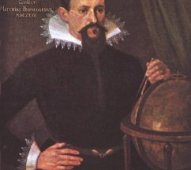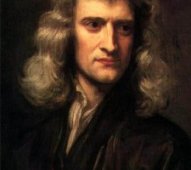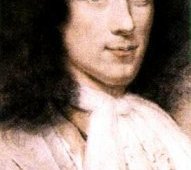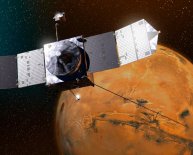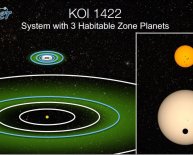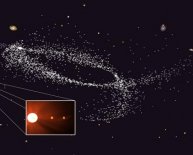
Famous astronomers

- Credit: Karl Tate, SPACE.com
For as long as humanity has gazed up at the stars, there have been astronomers studying the heavens in order to explain those bright lights in the sky.
See some of the most famous astronomers and physicists throughout history, from humanity's earliest observations of celestial events to today's investigations of deep sky objects that hold the secrets of the universe.
FIRST STOP: Ptolemy
- Credit: Bartolomeu Velho, Public Domain
Claudius Ptolemy
Claudius Ptolemy (AD 90-168) lived in Egypt but possessed Greek ancestry. As a mathematician, geographer and astronomer, he authored several scientific texts which had considerable impact on Western intellectual thought.In the 2nd century, Ptolemy published the Almagest, a comprehensive treatise on the movements of the stars and planets. It expanded Hipparchus’ geometric model of celestial motions, utilizing epicycles and eccentric circles in a geocentric theory which placed the Earth at the center of the solar sys tem. This Ptolemaic system presented tables of information allowing convenient predictions of planetary locations. Ptolemy also catalogued 48 constellations, the names of which are still in use at present.
Ptolemy’s writings stood as authoritative for more than twelve hundred years. However, his model, which was incorrect, later fell out of use as the heliocentric view of the solar system came into being.
Few details about Ptolemy’s life survived to the present day.
NEXT: Copernicus
- Credit: Public Domain
Nicolaus Copernicus
Nicolaus Copernicus (1473-1543) shattered the long-held notion that the Earth was the center of the solar system, proposing a heliocentric (sun-centered) model instead.Copernicus, of Poland, felt the Ptolemaic view of the planets traveling in circular orbits around the Earth was over-complicated with many smaller circles, epicycles, needed to explain the intermittent retrograde motion of the planets (in which they appear to move in the opposite direction of the the stars). Copernicus published his book, De Revolutionibus Orbium Coelestium ("On the Revolutions of the Heavenly Spheres") when he was 70 and lay dying.
His ideas took almost a hundred years to gain credence, but Galileo's 1632 assertions that the Earth orbited the sun built upon the Polish astronomer's work, cementing the Copernican revolution. [Read more about Copernicus.]
NEXT: Kepler
- Credit: NASA Goddard Space Flight Center Sun-Earth Day
Johannes Kepler
Johannes Kepler (1571–1630) defended and modified the Copernican view of the solar system with a radical reformation that established him as one of the great lights of the Scientific Revolution of the 16th-17th centuries.Kepler deduced that the planets do not travel in perfect circles around the Sun, as Copernicus had thought, but rather possess elliptical orbits, with the sun at one of the foci. This insight formed his first planetary law, which he published in 1609 with the second law which stated that planets do not travel at the same rate throughout their orbits.
Kepler's third law, published a decade later, posited that the relationship between the length of two planets' orbits is related to their distances from the sun. Though he made other contributions to mathematics and optics, Kepler's three laws made him a giant of astronomy. [Read more about Kepler.]
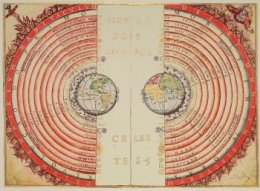 NEXT: Galileo
NEXT: Galileo - Credit: NASA
Galileo Galilei
Galileo Galilei (1564–1642) stood as the central figure of the scientific revolution of the 17th century, with his work in physics, astronomy, and scientific methodology.Galileo, born in Pisa, Italy, made numerous scientific discoveries. He famously proved that all falling bodies fall at the same rate, regardless of mass. Further he developed the first pendulum clock.
Galileo experimented with and refined telescopes (though he did not invent them, as is often incorrectly thought). He is perhaps best known for discovering the four most massive moons of Jupiter, now known as the Galilean moons.
Based on his telescope research, Galileo supported the Copernican heliocentric model of the solar system, publishing his arguments in "Dialogue Concerning the Two Chief World Systems, " during 1632. The ruling Catholic church forced Galileo to recant these theories, and was kept under house arrest for the remaining nine years of his life. Today his legacy lived on in the Galileo spacecraft which probed Jupiter. [Read more about Galileo.]
NEXT: Isaac Newton
- Credit: Sir Godfrey Kneller
Isaac Newton
Isaac Newton (1642–1727) often commands respect as the most influential figure in all of science. He invented calculus, as well as investigating optics, mechanics, experimental chemistry, alchemy, and theology. His creation of the three universal laws of motion plus the invention of the theory of universal gravity permanently altered the field of science.The well-known Newtonian laws of motion are: 1) an object at rest tends to stay at rest and an object in uniform motion tends to stay in uniform motion unless acted upon by a net external force. 2) The net force on an object is equal to the rate of change of its linear momentum in an inertial reference frame, or if a body is accelerating, there a force is acting on it. 3) For every action there is an equal and opposite action.
In a story that has long since gone into the public consciousness, Newton supposedly found inspiration for his theory of gravitation upon seeing an apple fall from a tree. From this he conjectured that gravity's pull could extend outwards from the earth, even as far as the moon and further.
Newton's achievements have been celebrated in many ways, with statues and poems. Notably the unit for force was named for him, the newton (N). [Read more about Newton.]
NEXT: Christiaan Huygens
- Credit: Portrait by Bernard Vailant
Christiaan Huygens
Dutch astronomer Christiaan Huygens (1629–1695) made advances in mathematics, physics, and horology. Developing improved telescopes, he was able to make several important astronomical discoveries. In 1655, he proposed that a thin, flat ring circled Saturn. He also discovered the first moon of Saturn, Titan. He made the first known drawing of the Orion Nebula. Elsewhere in his research, Huygens proposed a wave theory of light, which was disputed by Newton, who preferred the particle theory. The modern theory of light combines the two into a wave-particle duality model.
Elsewhere in his research, Huygens proposed a wave theory of light, which was disputed by Newton, who preferred the particle theory. The modern theory of light combines the two into a wave-particle duality model.NEXT: Giovanni Cassini
-
Giovanni Cassini
Giovanni Cassini (1625-1712) was born in Perinaldo, Republic of Genoa (now Italy). In 1672, Cassini and colleague Jean Richer used the parallax method to determine the distance of Mars from Earth, permitting the first estimations of the dimensions of the solar system. Using a method outlined by Galileo, Cassini was also the first to make successful measurements of longitude. Cassini made the first observations of four of Saturn's moons: Iapetus, Rhea, Tethys and Dione. In addition, he discovered the Cassini Division in the rings of Saturn in 1675. His name lives on today in the Cassini orbiter which has studied Saturn and its satellites since 2004. [Read more about Cassini.]NEXT: Charles Messier
- Credit: Cambridge University Press
Charles Messier
Charles Messier (1730-1817) of France developed an interest in astronomy at an early age, having witnessed a 6-tailed comet at age 14 in 1744. Further he viewed an annular solar eclipse in 1748. As a young comet hunter, he began to discover and note nebulas, as these frequently were confused for comets. Thus began his famous catalog of deep-sky objects, such as star clusters and galaxies. The first version in 1771 covered 45 objects, eventually expanded by Messier to 103 objects (though there is a debate about M102). Later astronomers filled out the catalog to a total of 110 objects. Today Messier's catalog is still used widely, though because of his location in France, he only included Northern Hemisphere sky objects. [Read more about Messier.]NEXT: Albert Einstein
- Credit: ESA
Albert Einstein
Albert Einstein (1879–1955) of Germany stands as the preeminent physicist of the twentieth century. Though he did not practice observational astronomy as in peering through telescopes, his theories of relativity extended so far — to the entire universe, in fact — they forever changed astronomy.Einstein’s first revolutionary innovation came in the form of his special theory of relativity which states that the laws of physics are the same everywhere in the universe. Further, the speed of light is a constant. A great deal of modern physics revolves around these ideas. Einstein determined that the faster an object moves, the more massive it becomes, giving rise to his famous equation: E=mc^2, where E is energy, m is mass and c is the speed of light.
Further expanding those ideas, Einstein developed general relativity, which states space and time curve near a massive object, distorting the fabric of space-time. he published the general theory of relativity in 1916.
Einstein received the 1921 Nobel Prize in physics, among many other awards and honors. His distinctive appearance, in particular his flowing hair, made an indelible impression upon world society, serving as a template for eccentric scientists and geniuses in fiction. [Read more about Einstein.]
NEXT: Carl Sagan
- Credit: Cosmos/Discovery
Carl Sagan
Carl Sagan (1934-1996), was born in Brooklyn, New York. He served as professor of astronomy and space sciences, and director of the Laboratory for Planetary Studies at Cornell University. He made many scientific discoveries, including explaining the high temperatures of Venus and the seasonal changes on Mars.However, Sagan’s real contribution to astronomy was as a educator and popularizer of science. He published numerous articles and books, including “Cosmos, ” which became a television show viewed by a billion people in sixty countries. As host of the show, he even spawned his own catchphrase — the oft-parodied “billions and billions” — based on his distinctive inflection, though he never uttered that phrase during the show. Sagan also penned the science-fiction novel “Contact, later adapted into a motion picture starring Jodie Foster. Many tributes and memorials were dedicated to Sagan following his death, illustrating how deeply his persona pervaded the cultural landscape. [Read more about Sagan.]
NEXT: Stephen Hawking
- Credit: ZERO-G
Stephen Hawking
Stephen Hawking (b. 1942) of Oxford, England, is a theoretical physicist and cosmologist, considered one of the greatest scientific minds since Einstein. Although motor neurone disease related to amyotrophic lateral sclerosis (Lou Gehrig’s disease) hobbled him since the age of 20, Hawking completed his doctorate in cosmology at Cambridge.Hawking's primary discovery stated that since the universe began (at the Big Bang), it must come to an end. Hawking demonstrated (with Roger Penrose) that since Einstein’s general theory of relativity suggested that space and time began at the birth of the universe, and ends within black holes. This results unites general relativity and quantum theory. Further, Hawking predicted that black holes do emit radiation, called Hawking radiation.
Hawking wrote about these and other discoveries in several books, including the best-seller A Brief History of Time. His wheelchair-bound appearance and his speech-synthesized voice (he is now completely paralyzed) are familiar to the public from appearances on Star Trek: The Next Generation, The Simpsons, Futurama, and The Big Bang Theory. [Read more about Hawking.]
